- Administrator
- Albums and Singles
 Wrapping up Mute's series of flawless reissues of the Virgin Prunes' neglected back catalog is this two-disc collection of odds and ends. Over the Rainbow compiles long-lost singles and compilation tracks from various vinyl and cassette releases on Rough Trade and the Prunes own Baby imprint. When this was originally released on LP back in 1986, the album only contained the material on the first disc. Mute and Gavin Friday have generously reached back into the past and dug up enough material to fill a second disc.
Wrapping up Mute's series of flawless reissues of the Virgin Prunes' neglected back catalog is this two-disc collection of odds and ends. Over the Rainbow compiles long-lost singles and compilation tracks from various vinyl and cassette releases on Rough Trade and the Prunes own Baby imprint. When this was originally released on LP back in 1986, the album only contained the material on the first disc. Mute and Gavin Friday have generously reached back into the past and dug up enough material to fill a second disc.
The music on both discs easily ranks among the best of the Virgin Prunes, showcasing a breathtaking artistic range never exemplified better than here. Most of the material dates from 1980-1982, the most fertile creative period for the cadre of flag-flying freaks. Listening to the sheer breadth of insanely adventurous approaches on Rainbow made me wonder just what exactly they were putting in the Lypton Village aqueducts; whatever the mysterious chemical was, it's a shame they stopped. It seems that the Prunes often saved their most experimental moments for the odd flexi-disc or cassette compilation, from the hypnotic ambience of early tape piece "Red Nettle" to the psychedelic cacophony of sampled birdsong on "Mad Bird in the Wood." "Jigsawmentallama" is a compelling piece, a slowly evolving sequence of overlapping rhythms, nebulous industrial noise and eerie graveyard vocals. "Greylight" and "War" are prime examples of early 80s post-industrial experimentalism, combining layers of droning, oppressive synths with primitive drum machine and mutated vocals. Tracks on the album reminded me variously of Dogs Blood Rising-era Current 93, Death in June of Brown Book, or the tense abrasiveness of This Heat. The previously unissued track "The Happy Dead" is a stunning 13-minute collage of experimental music intended as the soundtrack to the never-released Prunes film A New Form of Beauty. It's an intense combination of dissonant, improvised piano fugue, richly evocative ambient soundscapes and warped passages of dark, discombobulated Krautrock. "Third Secret" takes a crack at the low-fi industrial klingklang of early Neubauten, with a brief track constructed from the arrhythmia of randomly struck metal pipes. Not all of Rainbow is quite this abstract, however, as the collection also offers its share of the Prunes' post-punk compositions. A pair of extended dance mixes of two classic tracks off ...If I Die, I Die — "Pagan Lovesong" and "Baby Turns Blue" — provide plenty of bat-swatting, tombstone-kicking fodder for those who, like me, can't get enough vintage goth thrills. Without a doubt, Over the Rainbow provides the most bang for your buck among Mute's five reissues, as well as a serving as remarkable evidence of the band's uniquely expansive vision.
samples:
Read More
- Administrator
- Albums and Singles
Kranky Over twenty-one tracks, eighteen artists, and one hundred andforty-eight minutes of music, Kranky of Chicago, IL demonstrates why itis one of the most excellent record labels in existence. Stars of theLid, Keith Fullerton Whitman, Greg Davis, Loscil, Clear Horizon,Jessica Bailiff, Out Hud, Fontanelle, Pan·American, and many othersshow off their varied talents on this two-disc compilation, someproviding exclusive tracks, a couple previewing upcoming material, andeveryone making it clear just how beautiful their music is. Pricedincredibly cheap, Kompilationmakes it possible to get a taste of many of the new artists on thelabel without shelling out big bucks and it provides a chance to hearmaterial from the next Stars of the Lid and Keith Fullerton Whitmanalbum. Listening to both discs makes Kranky's diversity obvious.Christina Carter and her acoustic guitar work immediately follows thebuzzing and busy work of Autistic Daughters only to be followed by GregDavis' exclusive mix of "Campestral," which sounds nothinglike whatcomes before it. So much music is exhibited on this release that it'shard to know where to start; each track has its own essence, eachreflects a different direction in modern music, and each is fun tolisten to. More than one or two tracks reminded me of how much I loveda band and a few have forced me to put yet another record on my "tobuy" list. Each track being so different from the last might causeconcern for continuity; it is, of course, always nice when a recordflows smoothly. The Kompilation keeps everything moving quitenicely and despite the various changes in mood, structure, andpresentation, the very last song sounds as though it is part ofsomething bigger (even though no artist has two songs right next toeachother). Even though I have quite a few of the record that areshowcased on this compilation, I'm still very glad I have it and for acouple of reasons. Beyond the exclusive tracks and the previews of newmaterial, the Kompilation is just plain fun to listen to. Afterlistening to the second disc, I broke out my Out Hud and JessicaBailiff records to satiate the hunger the compilation had put in me.Listening to "Schnee" sandwiched between Pan·American's "InsideElevation" and Clear Horizon's "For Days" was a treat and made me thinkthat maybe Kranky should be a little more incestuous. Whitman, Bailiff,David Pearce, and Mark Nelson all on one record would be so good thatit might give reason to suspect that the apocalypse is coming. In anycase, the Kompilation is a good chance to hear new music and bereminded of how excellent the more familar music is. In fact, there'sabsolutely no reason not to own this double-disc collection of songs:it is cheap, it is full of some of the best music being made in theworld right now, and it's evidence of the fact that record labels andmusicians everywhere have a lot to live up to. Kranky and the musicianson the label are setting standards that many will have difficultyreaching, much less surpassing.
Over twenty-one tracks, eighteen artists, and one hundred andforty-eight minutes of music, Kranky of Chicago, IL demonstrates why itis one of the most excellent record labels in existence. Stars of theLid, Keith Fullerton Whitman, Greg Davis, Loscil, Clear Horizon,Jessica Bailiff, Out Hud, Fontanelle, Pan·American, and many othersshow off their varied talents on this two-disc compilation, someproviding exclusive tracks, a couple previewing upcoming material, andeveryone making it clear just how beautiful their music is. Pricedincredibly cheap, Kompilationmakes it possible to get a taste of many of the new artists on thelabel without shelling out big bucks and it provides a chance to hearmaterial from the next Stars of the Lid and Keith Fullerton Whitmanalbum. Listening to both discs makes Kranky's diversity obvious.Christina Carter and her acoustic guitar work immediately follows thebuzzing and busy work of Autistic Daughters only to be followed by GregDavis' exclusive mix of "Campestral," which sounds nothinglike whatcomes before it. So much music is exhibited on this release that it'shard to know where to start; each track has its own essence, eachreflects a different direction in modern music, and each is fun tolisten to. More than one or two tracks reminded me of how much I loveda band and a few have forced me to put yet another record on my "tobuy" list. Each track being so different from the last might causeconcern for continuity; it is, of course, always nice when a recordflows smoothly. The Kompilation keeps everything moving quitenicely and despite the various changes in mood, structure, andpresentation, the very last song sounds as though it is part ofsomething bigger (even though no artist has two songs right next toeachother). Even though I have quite a few of the record that areshowcased on this compilation, I'm still very glad I have it and for acouple of reasons. Beyond the exclusive tracks and the previews of newmaterial, the Kompilation is just plain fun to listen to. Afterlistening to the second disc, I broke out my Out Hud and JessicaBailiff records to satiate the hunger the compilation had put in me.Listening to "Schnee" sandwiched between Pan·American's "InsideElevation" and Clear Horizon's "For Days" was a treat and made me thinkthat maybe Kranky should be a little more incestuous. Whitman, Bailiff,David Pearce, and Mark Nelson all on one record would be so good thatit might give reason to suspect that the apocalypse is coming. In anycase, the Kompilation is a good chance to hear new music and bereminded of how excellent the more familar music is. In fact, there'sabsolutely no reason not to own this double-disc collection of songs:it is cheap, it is full of some of the best music being made in theworld right now, and it's evidence of the fact that record labels andmusicians everywhere have a lot to live up to. Kranky and the musicianson the label are setting standards that many will have difficultyreaching, much less surpassing.
samples:
- Christina Carter - Silhouette
- Loscil - Sickbay
- Clear Horizon - For Days
Read More
- Administrator
- Albums and Singles
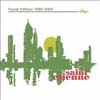 This compilation is an excellent selection of highlights from the group's entire career to date. The previously unreleased instrumental, "Primrose Hill," is a perfect lead-off track, as it provides an introduction and sets the mood. Travel Edition shows that Saint Etienne has evolved from their dance music roots, as heard on their 1990 cover of Neil Young's "Only Love Can Break Your Heart," into a group capable of featuring tracks with a live band feel, such as "Lose That Girl," alongside dance-floor friendly tracks, such as "Sylvie," on the same album (1998's Good Humor). A main strength is their ability to write catchy pop songs while retaining credibility in the techno world. Saint Etienne is one of the few groups besides New Order and The Pet Shop Boys that have successfully combined pop music and techno. US mainstream radio would benefit greatly by supporting them. While it is easy to dismiss pop music as trite, Travel Edition serves to remind us that music can be catchy and still have integrity.
This compilation is an excellent selection of highlights from the group's entire career to date. The previously unreleased instrumental, "Primrose Hill," is a perfect lead-off track, as it provides an introduction and sets the mood. Travel Edition shows that Saint Etienne has evolved from their dance music roots, as heard on their 1990 cover of Neil Young's "Only Love Can Break Your Heart," into a group capable of featuring tracks with a live band feel, such as "Lose That Girl," alongside dance-floor friendly tracks, such as "Sylvie," on the same album (1998's Good Humor). A main strength is their ability to write catchy pop songs while retaining credibility in the techno world. Saint Etienne is one of the few groups besides New Order and The Pet Shop Boys that have successfully combined pop music and techno. US mainstream radio would benefit greatly by supporting them. While it is easy to dismiss pop music as trite, Travel Edition serves to remind us that music can be catchy and still have integrity.
This is a group whose music contains more variety than some may realize. Their influences have always been hinted at subtly, rather than directly copied. The backing vocals on "Avenue" recall the girl groups of the early 60's, while the track sounds undeniably modern. The flutes on "Nothing Can Stop Us" and "Hug My Soul" show an appreciation for Brian Wilson's arranging sensibility, while neither song sounds like one of hundreds of blatant Pet Sounds rip-offs. Travel Edition 1990-2005 is more successful than the UK-only Too Young To Die-Singles 1990-1995 because it contains some of the best album tracks as well as many excellent UK singles. "Mario's Cafe," a highlight from 1993's So Tough LP, is included here, while "You're in a Bad Way," a single from the same LP, has been left off. "Lose That Girl" and "Goodnight Jack," both from Good Humor, have been rightfullly chosen over the single "The Bad Photographer." This shows that some thought was put into selecting the tracks. By including album tracks that are as strong as singles, the compilers have shown that their discography is worth digging into. Although the one new track, "Fascination" is excellent, many fans may find little appeal to a collection of tracks that have mostly been readily available on albums and previous UK compilations. It might have been wise to include a few tracks from the scarce I Love To Paint album, which was only available through the band's fan club in 1995. It's a shame that Saint Etienne has never been given much recognition in the US as one of the truly great pop groups of the last two decades. Hopefully this first-time US "best-of" will help gain them some appreciation.
samples:
Read More
- Administrator
- Albums and Singles
Subliminal Sounds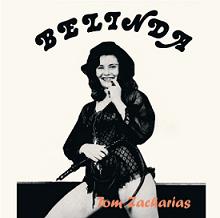 Tom Zacharias was something of a renaissance man: Sweden's first malepin-up, a successful film and television producer, singer andsongwriter of a string of well-received LPs, and the mastermind behind Belinda and Belinda's Daughter,to my knowledge the only albums ever to have been conceived and createdspecifically to be sold from ads in the back of porn magazines. This isthe sort of thing that could only have happened in the Sweden of theearly 70s, with the sexual revolution in full swing and people waitingin lines around the block for mainstream erotic films like I Am Curious Yellow.In 1973, Zacharias was approached by businessman, inventor andastrologer Stefan Brydolf, who proposed that he write, perform andproduce two concept albums of erotic rock, along with an accompanyingerotic novel. The novel was written, and the LPs were recorded with thehelp of Sweden's finest session musicians, and everything sold fairlywell. The next logical market was North America, so Zacharias recruitedNew Yorker Suzy Heine to translate and re-dub the lyrics in English,and ads were placed in US men's magazines like Screw and Hustler.Unfortunately, they never received even one order, and the album wasshelved. Now Sweden's Subliminal Sounds have released this collection,which gathers together the never-before-heard English language tracks,together with both of the Swedish LPs. I have rarely heard anything asfunny or as shocking as the first six tracks on this disc; funky 70sacid rock with completely over-the-top pornographic lyrics. Startingoff with a sleazy fuzz-guitar solo, "Dirty" quickly erupts intoalarmingly direct pornographic provocation: "You want to suck a cockand lick a hairy pussy/And wear sexy underwear and paint your face/Youwant a cock up your ass and rubber ducks in your bath/You'd like toscrew every sailor in the place...You want a 10-year old virgin to useand abuse/You'd like your friends to gangbang your mother-in-law/Whileyou watch it all and jerk off on her shoes." Singer Suzy Heine eruptsinto perverse Karen Finley-style shrieking, detailing every sexualperversion imaginable: S&M, incest, rape fantasies, foot fetishismand homosexuality are all celebrated with equal zeal. What's mostamazing is the infectiously funky jamming by the session musicians,which is really quite good, a terrific specimen of mid-70s acid-funk.It's tempting to compare it to porn soundtrack music, but I don'trecall any porn soundtracks with music this accomplished. A closerparallel might be Blaxploitation music, an apt comparison, becauseZacharias often reminds me of a Swedish Rudy Ray "Dolemite" Moore. Fornon Swedish-speakers, this disc loses a little bit of momentum aftertrack six, because the remainder of the tracks are from theSwedish-language LPs, but the music is still fun. Belinda isabsolutely essential; I don't where else you'd get to hear suchlanguid, trippy rock music accompanying lyrical refrains like: "There'sa he-man on the sofa with a hard-on, giving me the go-ahead sign/Aboutfour cocks at a time is all I can handle, with someone sucking mine."
Tom Zacharias was something of a renaissance man: Sweden's first malepin-up, a successful film and television producer, singer andsongwriter of a string of well-received LPs, and the mastermind behind Belinda and Belinda's Daughter,to my knowledge the only albums ever to have been conceived and createdspecifically to be sold from ads in the back of porn magazines. This isthe sort of thing that could only have happened in the Sweden of theearly 70s, with the sexual revolution in full swing and people waitingin lines around the block for mainstream erotic films like I Am Curious Yellow.In 1973, Zacharias was approached by businessman, inventor andastrologer Stefan Brydolf, who proposed that he write, perform andproduce two concept albums of erotic rock, along with an accompanyingerotic novel. The novel was written, and the LPs were recorded with thehelp of Sweden's finest session musicians, and everything sold fairlywell. The next logical market was North America, so Zacharias recruitedNew Yorker Suzy Heine to translate and re-dub the lyrics in English,and ads were placed in US men's magazines like Screw and Hustler.Unfortunately, they never received even one order, and the album wasshelved. Now Sweden's Subliminal Sounds have released this collection,which gathers together the never-before-heard English language tracks,together with both of the Swedish LPs. I have rarely heard anything asfunny or as shocking as the first six tracks on this disc; funky 70sacid rock with completely over-the-top pornographic lyrics. Startingoff with a sleazy fuzz-guitar solo, "Dirty" quickly erupts intoalarmingly direct pornographic provocation: "You want to suck a cockand lick a hairy pussy/And wear sexy underwear and paint your face/Youwant a cock up your ass and rubber ducks in your bath/You'd like toscrew every sailor in the place...You want a 10-year old virgin to useand abuse/You'd like your friends to gangbang your mother-in-law/Whileyou watch it all and jerk off on her shoes." Singer Suzy Heine eruptsinto perverse Karen Finley-style shrieking, detailing every sexualperversion imaginable: S&M, incest, rape fantasies, foot fetishismand homosexuality are all celebrated with equal zeal. What's mostamazing is the infectiously funky jamming by the session musicians,which is really quite good, a terrific specimen of mid-70s acid-funk.It's tempting to compare it to porn soundtrack music, but I don'trecall any porn soundtracks with music this accomplished. A closerparallel might be Blaxploitation music, an apt comparison, becauseZacharias often reminds me of a Swedish Rudy Ray "Dolemite" Moore. Fornon Swedish-speakers, this disc loses a little bit of momentum aftertrack six, because the remainder of the tracks are from theSwedish-language LPs, but the music is still fun. Belinda isabsolutely essential; I don't where else you'd get to hear suchlanguid, trippy rock music accompanying lyrical refrains like: "There'sa he-man on the sofa with a hard-on, giving me the go-ahead sign/Aboutfour cocks at a time is all I can handle, with someone sucking mine."
samples:
Read More
- Administrator
- Albums and Singles
 A duo of Wilhelm Herich and Brigant Moloch (both of Anenzephalia and also half of Genocide Organ), this new project is unsurprisingly bleak and gray synth heavy industrial. It does, however, separate itself pretty well from the duo’s other projects by focusing less on oppressive atmospheres and noise outbursts and more on a depressive rhythmic pulse and a focus on their industrial heritage.
A duo of Wilhelm Herich and Brigant Moloch (both of Anenzephalia and also half of Genocide Organ), this new project is unsurprisingly bleak and gray synth heavy industrial. It does, however, separate itself pretty well from the duo’s other projects by focusing less on oppressive atmospheres and noise outbursts and more on a depressive rhythmic pulse and a focus on their industrial heritage.
Ke/Hil is distinct, but not completely different from the other projects that the two artists work in. To me it feels more in line with the early days of industrial than the harsher noise stuff people usually associate with them.Even though Genocide Organ has started to move in this direction: the recent :Under-Kontrakt: album comes from a similar restrained place, buteven on there there’s still a vibe of oppression and heaviness that is deemphasized here.
This becomes evident pretty early on in the album, with the long opener "Mirror of the World of Mirrors."Even though the opening nasal sine wave wouldn't be out of place on a more harsh album, when the subtle, almost melodic undercurrent rises up it sets the track apart.The closing minutes are even farther out there, with calm, mostly untreated vocals and actual guitar audible above the grinding synths.
The title track especially reminded me of those early Industrial Records releases with its effected, spoken vocals having more than a passing resemblance to Genesis P-Orridge's work with Throbbing Gristle.Musically, it's a mix of deep, gurgling synth stabs arranged into a plodding dirge, rhythmic, but lurching slowly.
The use of what sounds like wartime or riot field recordings all throughout "Ephedrine" wouldn’t be out of place on some of the older Genocide Organ albums, but the requisite Korg MS-10 abuse is more subtle and textural than the heavy, oppressive layers a power electronics band would use, giving a violent edge to the otherwise atmospheric backing. This isn't to say that there isn't a chunk of harshness to be had here and there, however."Black Snow" cranks up some distorted layers of synth that get a bit shrill, but the slow, heartbeat like thump and ambient undercurrent keep it from being a generic noise track.Similarly, "Adrenalin" pushes out a heavy blast of overdriven noise, but there’s enough layering and variation in the mix that makes it a distinct piece.
Ke/Hil is as bleak and depressive as I'd expect from a Tesco release, but it is far more complex and structured than people would expect.Overall it does feel like one of the most faithful antecedents of the early industrial days, and even though it dabbles in power electronics and noise, it never loses sight of its roots.
samples:
 
Read More
- Administrator
- Albums and Singles
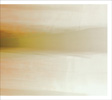 At four pieces spread across three separate CDs, the term "sprawling" immediately came to my mind with this set. Even though it is a lengthy recording, the pieces are so distinct and different from one another that it is a challenging, but rewarding listen.
At four pieces spread across three separate CDs, the term "sprawling" immediately came to my mind with this set. Even though it is a lengthy recording, the pieces are so distinct and different from one another that it is a challenging, but rewarding listen.
The first piece, "January 4, 2011," is perhaps one of the most different, because essentially it is untouched by any sort of computer processing.The layered tracks of metallophones and xylophones intertwine like a wind chime shop during a tornado.Clattering together chaotically, the fact that it’s based on live recordings.
The second piece on this first disc, "November 7, 2010," takes an entirely different approach.Piano, celesta, and strings are heavily processed and treated via software, stretched microtones expanding into delicate, vast expanses.The original, untreated sounds come through here and there, but for the most part it’s over forty minutes of delicate, crystalline tones that sound like they could shatter at any time.
Disc two is a single piece, "September 25, 2010," in which 142 unique chords and combinations of strings, woodwind and horns are scattered about huge expanses of silence.The actual instrumentation mostly retains its natural sound, with each irregular surge bringing together the instruments and chords into unique, varying microtonal clusters.I must admit first skimming through the disc, the long spans of silence seemed dull, but it makes perfect sense in the context of whole piece.
The final piece, which takes up the entire third disc, consists of two layers of decaying piano playing, with enough lo-fi static to drive home the feeling of age and rot.Making this even more pronounced is a jittery, erratic mastering that puts huge gaps of silence in the piece.Listening to this on my laptop, I had to check more than once to make sure that the computer didn't freeze or crash.It is jarring and distracting at times, but the hushed, static enshrouded passages of piano are beautiful enough to make the challenge worth it.
With the length of pieces and varying modalities used, this is a difficult suite of compositions.At times it feels like sonic abstractions of abstractions:l a meta-decomposition of sound that isn’t something that works well in the background, but taken piece by piece with dedicated, focused listening, the results are captivating.
samples:
 
Read More
- Administrator
- Albums and Singles
 Out of retirement, off of hiatus, back for another round—whatever you call it, Lamb's newest full length is as good as it is unexpected. After exploding into the world with a classic debut album, it has taken the band four more shots to come up with a worthy follow up, but they have finally done it.
Out of retirement, off of hiatus, back for another round—whatever you call it, Lamb's newest full length is as good as it is unexpected. After exploding into the world with a classic debut album, it has taken the band four more shots to come up with a worthy follow up, but they have finally done it.
Lamb's debut came out of nowhere and distilled many of the popular UK dance music styles from the mid 1990s into a single, wonderfully cohesive record. Although they were indebted to the Bristol trip hop scene and lumped in with others like Massive Attack and Portishead, tracks like "Cotton Wool" took cues from the nascent drum n bass world and demonstrated that Lamb was blazing their own path. The lead story back then was the May-December pairing of producer Andy Barlow and vocalist Lou Rhodes. Age isn't usually anything but a number, but in Lamb's case, this actually seems to matter.
On 5, Lamb's first new full length since 2003, Lou Rhodes' voice is noticeably huskier than it used to be and it's full of the kind of seasoning that young singer-of-the-week types only hope to gain some day. Likewise, Barlow's production remains current and relevant in an ever-changing landscape of popular electronic music, but he too has matured and there's nothing on 5 that feels like it is chasing a trend. After a few albums of mostly unremarkable material, the break seems to have done Lamb some good because 5 is full of truly noteworthy songs.
On "Another Language," Rhodes offers a meditation on the failure of language to capture issues of the soul over beats that stop, cut, and restart as if the music is trying to slow down as she tries to find the right words. "Wise Enough" seems like the album's most obvious single—a thoughtful torch song that plays to the band's ability to craft sweeping melodies and hummable hooks. It is the kind of song I have been longing for Lamb to record again since that first album, and while it recalls a little of "Gabriel" from 2001's What Sound the slightly older and wiser Lamb feels more accomplished.
An excursion into heavy guitar riffing lends the album a sore thumb of sorts in "Build A Fire," which probably served to scratch an itch somewhere in the band, but yielded a song that doesn't sound right on this record. Nearly everything else is golden though, with richly layered vocal production and enough variety to keep things from sounding too similar. "Rounds" is beautiful and might have been trampled all over by a band less confident in their ability to step out of the dance club arena to just craft lovely songs. Thankfully, Lamb gets to do whatever they want here.
Pre-orders of the album (that helped to fund its production) included a second disc of instrumentals, alternate mixes, and a track with Damien Rice called "Back to Beginning." Sometimes fans hang on to a band well past the sell-by date and pump money into an endless stream of middling records and cash-ins, but in this case, the fans may have helped to breathe some life into a band that still has some legs. I hope this comeback isn't limited to 5 since I'm more interested now to hear where Lamb will go than at any point since I first fell in love with "Cotton Wool."
Samples
Read More
- Administrator
- Albums and Singles
 The latest album to feature Chris Watson shows a different side to his art, harking back to his roots in Cabaret Voltaire and The Hafler Trio while staying true to his current role as a field recorder. The two pieces (one a collaboration with Marcus Davidson and the other a solo work) are both designed as performance pieces utilising Watson’s recordings of nature as the source. However, trickery and aesthetics play a role here that has been absent from his body of work for a long, long time. It sounds like you are there but "there" is not as it seems.
The latest album to feature Chris Watson shows a different side to his art, harking back to his roots in Cabaret Voltaire and The Hafler Trio while staying true to his current role as a field recorder. The two pieces (one a collaboration with Marcus Davidson and the other a solo work) are both designed as performance pieces utilising Watson’s recordings of nature as the source. However, trickery and aesthetics play a role here that has been absent from his body of work for a long, long time. It sounds like you are there but "there" is not as it seems.
The two long tracks here follow very different paths. The first, "Midnight at the Oasis," is a classic solo Watson field recording and it is exactly what I would expect from such a title: Watson ventured out into Kalahari at night to record the nocturnal desert soundscape. While I expected plenty of night life in such a place (as the unrelenting heat of the day means that most desert creatures are nocturnal rather than diurnal) but I was completely unprepared for the sheer noise of the scene. The insects put most noise musicians to shame and what sounds like mammalian and avian species add a color to the chirping and droning of the invertebrates. It is only when I investigate the liner notes that I see that this is not a 28 minute excerpt during the night but an audio compression of sunset to sunrise (I suppose something akin to time-lapse photography).
On the subject of droning invertebrates, "The Bee Symphony" makes up the rest of Cross-Pollination. Here, Davidson combines Watson’s recordings of honeybees with similar documentation by Mike Harding before arranging a choral accompaniment to the apoidean sounds. The Bee Choir gives a human countenance to the bees’ buzz, their vocalizations following the swells and undulations of the high-frequency beating of the tiny wings. It is a fascinating experience and although the sounds of animals have always interested me, hearing human voices mimic the bees makes me listen to the bees here and in my garden in a more focused way. This has always seemed to be Watson’s goal on his previous solo recordings and Davidson has hammered this point home with firm precision on "The Bee Symphony."
While I think I prefer Watson’s regular recordings, unadorned moments in time caught on tape, I do feel that Cross-Pollination is a successful experiment. It would be nice to hear the bee recordings on their own but equally it would be interesting to hear more of Watson’s recordings integrated into other works. Davidson has done a wonderful job here; the balance between the choir and original recordings is perfect. Equally, Watson’s way of playing with time on "Midnight at the Oasis" could be employed in a number of different environments with, I imagine, interesting results.
samples:
 
Read More
- Administrator
- Albums and Singles
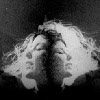 Recorded and rebuilt over half a decade ago, this odd little collaboration between Wastell, a cellist who for this album plays only a tam-tam gong, and everyone's favorite Norwegian noise master on processing and composition, finally sees the light of day on this single track album. Over the course of 40 minutes, the single instrument source is bent and reshaped so much that it bears little to no resemblance to its untreated counterpart, and that’s why this work succeeds.
Recorded and rebuilt over half a decade ago, this odd little collaboration between Wastell, a cellist who for this album plays only a tam-tam gong, and everyone's favorite Norwegian noise master on processing and composition, finally sees the light of day on this single track album. Over the course of 40 minutes, the single instrument source is bent and reshaped so much that it bears little to no resemblance to its untreated counterpart, and that’s why this work succeeds.
There almost feels like two distinct movements combined into one single piece.The first half opens initially with almost pure silence, broken up only by some static interference and slow, moaning passages of sounds.The static echoes and bounce around like nuisance insects over the lugubrious sounds.Eventually a big, ringing sound that truly resembles a gong can be heard, but pulled and stretched into an unnaturally long passage.
The different processed layers of sound entwine together, creating completely different textures that bear no resemblance to a metallic percussion instrument.At one point it actually sounds like a fly trapped in amplified bagpipes, in a futile attempt to escape but it never happens.More than a bit abrasive, to say the least.
Just as it becomes almost obnoxious, everything drops back to silence.Comparatively, this second half feels like the digital counterpart to the more organic part that preceded it.The bulk of sound is made of up tiny little digital delays, clustered together into microscopic outbursts that eventually become denser and louder, briefly building to a harsh roar that Marhaug’s fans have come to expect before retreating back to mostly untreated gong sounds.
It’s hard to comment on Wastell's tam tam playing, since the resulting recordings are so heavily treated and manipulated, but Marhaug's ear for composition is definitely a strong facet of this disc.Rather than going for the traditional electronic noise he’s known for, he keeps things rather restrained and structured, occasionally veering into abrasive territory, but never fully succumbing to the temptation to blow everything up sonically.Instead the results are careful and deliberate, making for one of the more unique items in his discography.
samples:
 
Read More
- Administrator
- Albums and Singles
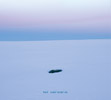
With a lengthy discography of albums on labels such as Kranky and Ghostly International, it's no surprise that Scott Morgan's newest album is a piece of majestic ambient beauty. The cover art is also a perfect image for the disc, a vista that is gorgeous yet frigid, just like the sound contained within.
Across six tracks Morgan cultivates a pretty consistent sound, meshing sparse, pure droning passages with varying dynamics and compositional structures.The opening "Black Tusk," for example, is heavily focused on deep, spacious tones that seemingly stretch out forever. The slow changes and undulations are balanced by subtle sheets of static that continue throughout, like cold winds kicking up snow and blowing it about.
Instead of static, recordings of rushing water are paired with thick tones on "Fromme," mixing the heavy, monolithic textures with purely natural sounds before both cease, allowing in a tremolo-laden passage of sound and deep heavy sub-bass pulses that shake everything around.
The remaining pieces focus more on the textural passages and dense tones and less on the noisier elements heard on "Black Tusk."The constantly shifting structure of "Stave Peak"is initially a series of swelling tones, almost like trumpets producing the outbursts.As the track goes on, the loud parts get louder and heavier, and the quiet parts no longer become as quiet, slowly building into a thick roar.
"Névé" and "Brohm Ridge" feature prominent bell-like tones, stretched out to become soaring passages of echoes and reverberations.The former conjures images of a winter's night, cold and becoming colder, the layers becoming more pronounced and forceful into almost a menacing intensity.The latter carefully ebbs and flows, shifting from sparse tones to dramatic outbursts with a cinematic flair, consistently balancing big flourishes with delicate moments.
Each composition on Coast/Range/Arc has its own distinctive presence, but all fit nicely together in an icy, yet compelling work.While there isn't a lot of warmth to be had here, the spacious drones and massive, heavy layers of sound still make it quite an inviting work.
Samples can be found here.
Read More
- Administrator
- Albums and Singles
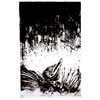 With his latest album as Asva, G. Stuart Dahlquist (Sunn O))), Burning Witch, Goatsnake) leaves metal behind and sets out on his own distinct path. Recent interviews tell me that he has spent the last three years investigating Josef Albers' color theory, losing musical weight on the Arvo Pärt diet, and studying the way sounds mutate and dazzle us when set in different contexts. As a result, his music has become less extroverted, more sonically inclusive, and equally more profound. Presences of Absences impresses with its density of sound and a fantastic vocal performance from Kayo Dot's Toby Driver, but its simple and patient manner is what makes it exceptional.
With his latest album as Asva, G. Stuart Dahlquist (Sunn O))), Burning Witch, Goatsnake) leaves metal behind and sets out on his own distinct path. Recent interviews tell me that he has spent the last three years investigating Josef Albers' color theory, losing musical weight on the Arvo Pärt diet, and studying the way sounds mutate and dazzle us when set in different contexts. As a result, his music has become less extroverted, more sonically inclusive, and equally more profound. Presences of Absences impresses with its density of sound and a fantastic vocal performance from Kayo Dot's Toby Driver, but its simple and patient manner is what makes it exceptional.
Out of all the lessons Josef Albers taught about color, one of the easiest to understand and observe is relativity. Colors interact with each other, so that, for instance, the same shade of green can appear to be diverse when set against two differing background colors. The opposite is also possible. Set two different shades of green against the correct backgrounds and they can be made to look as one. Context, Albers observed, changes everything. G. Stuart Dahlquist has taken that lesson and applied it to his music.
Book-ending the title track to Asva's third album are two unexpected a capella samples. The opening one is of a Creek Indian lullaby sung by a woman known only as Margaret. The other is an anonymous performance of "Shortnin' Bread," which was first written down by James Whitcomb Riley, but probably originated as a plantation song. Like Dahlquist's compositions this time around, they're composed of simple and memorable elements, but they're also full of depth: I wonder who is singing them, why they're singing, and most importantly for this review, what they're doing on an album full of bellowing organs and chanted vocals. As with Albers' theory, Margaret's simple melody takes on a grave character when situated next to the sprawling textures of the title track, and the darting rhythms of "Shortnin' Bread" sound weightier when they come at the end of 22 minute song full of shifting tonality and thumping drums. It's also true that Dahlquist's songs take on new qualities when held up in the light of these samples, and what "Shortnin' Bread" does to change the way I see "A Bomb in that Suitcase" is a mystery I'm still pondering.
Both are simple in their own way, and simplicity is probably the most important virtue Presences of Absences has. It can be found in either the compositions or in the instrumentation, and to some degree, the latter influences the former. The usual rock 'n' roll drums-and-guitars combo is altered and accompanied by three different kinds of organ—Hammond and Allen in addition to the Estey—and the organs are shored up by trumpet, flugelhorn, and the voice of Toby Driver. Throughout the record, Dahlquist blends his organs and bass guitar together, using them to create heavily textured melodies that span minutes rather than seconds. At points, the organs even sound like sine waves, and their interaction assumes an electric vibe. The melodies emphasize that ambiguity, too, partly because they're so peculiarly austere. If I had to guess, I'd say Dahlquist is playing with key signatures throughout the album; his music is never totally dissonant, but it emphasizes small frequency changes and unordinary melodies over clean harmonies. Long stretches of time pass where only a few notes are played, and overtones are often emphasized over melodic development.
Consequently, Presences of Absences is full of space, which leaves listeners with plenty of room and time to stretch out, get comfortable, and feel at home. Rather than inundate the ears and pressure the head with distortion, melody, rhythm, and noise, Asva opens up and trusts its audience to keep still and attentive enough to appreciate all the little details populating the mix, of which there are many. There are still some guitar crescendos and rhythms that descend from heavy metal, but even they transform in Dahlquist's capable hands, and percussionist Greg Gilmore does superb work finding rhythms suitable for the proceedings.
Contributing to that aggregate of boiling waves is the voice of Toby Driver, who sounds more at home on this record than he does on certain Kayo Dot records. He has abandoned the growl and shriek of heavy metal entirely for this release, preferring the melodious ring of David Bowie's higher registers. His falsetto reaches for religious heights and finds them on songs like "Birds" and "Presences of Absences," but he also dishes out the same kind of worldly exotica Bowie served up on Low's second side. When he isn't singing lyrics, he's vocalizing wordlessly, pushing his voice up against the organs and guitars so that they all fluctuate and warp together. Along with the masterful handling of space and instrumentation, Driver's voice is an essential ingredient in Dahlquist's recipe, and it may be the most obviously attractive thing on the whole record.
All of this brings me back to Josef Albers, though. Looking at his paintings, many of which are little more than concentric squares of varying color, I notice that the way I see changes according to the way he composes. I wonder if the colors I'm experiencing are the true colors on the canvas, or whether that particular shock of yellow would be so lovely in different surroundings. Albers concentrates on the basics, but he forces the viewer to find the complexity inherent in them. Asva accomplishes a similar feat with sound, turning Spartan figures into magnetic fields of patterns and crisscrossing sonorities. Inside the hum of their music time slows down a little, small details emerge, and a Creek Indian lullaby tells me something about music being made years later. Presences of Absences highlights the importance of context—as well as time and patience—and, using that as a basis, teases out the intricacy hidden in even the most elemental of music's building blocks. The outcome is a sensational album, and easily the best thing Dahlquist has recorded with any group.
samples:
 
Read More


